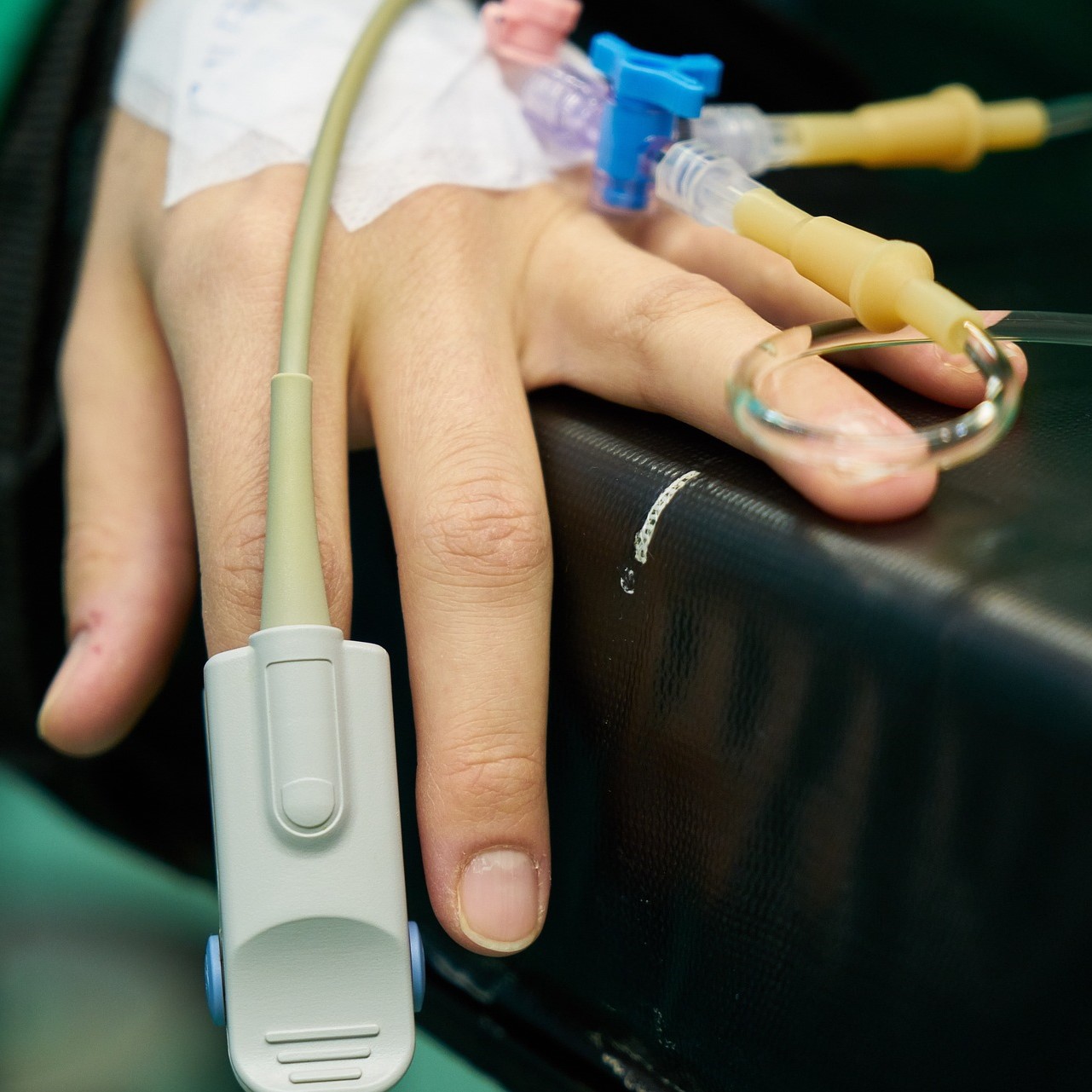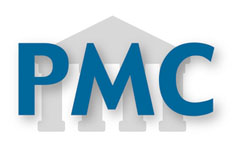Relationship between Perme ICU Mobility Score and length of stay in patients after cardiac surgery
Abstract
Background:
Patients undergoing cardiac surgery can experience functional impairment.
Objective:
Assess the influence of Perme Score on the intensive care unit (ICU) length of stay in patients after cardiac surgery. As a secondary objective, investigate if preoperative variables can predict the patient's mobility status after surgery.
Methods:
A prospective observational study was conducted in ICU of a university hospital. The mobility status (Perme Score) was collected from the first postoperative day until ICU discharge. The preoperative assessment of respiratory muscle strength, pulmonary function, and handgrip strength were collected.
Results:
A total of 44 patients, mean age of 62.3 years, 28 men were included in the study. A high Perme Score on the second postoperative day among patients who underwent Coronary artery bypass grafting and the third postoperative day on three types of intervention (Coronary artery bypass grafting, valve replacement, or both simultaneously) was associated with shorter ICU length of stay). The preoperative pulmonary function was one of the main independent predictors of mobility status on the first three days of ICU stay, in addition to left ventricular ejection fraction and cardiopulmonary bypass time on the first day, age, and left ventricular ejection fraction on the second day and maximum expiratory pressure on the third day.
Conclusion:
An increase in mobility status (Perme Score), mainly on the third postoperative day, reduced the ICU stay, mainly influenced by preoperative pulmonary function.
Authors
Downloads
Keywords
- cardiac surgery;
- intensive care units
- functional status
- mobilization
- Rehabilitation
- cardiac rehabilitation
- physical function performance
- muscle strength
References
Melly L, Torregrossa G, Lee T, Jansens JL, Puskas JD. Fifty years of coronary artery bypass grafting. J Thorac Dis. 2018; 10(3): 1960-7. https://doi.org/10.21037/jtd.2018.02.43 PMid:29707352 PMCid:PMC5906252
Silva GS da, Colósimo FC, Sousa AG de, Piotto RF, Castilho V. Coronary artery bypass graft surgery cost coverage by the brazilian unified health system (SUS). Braz J Cardiovasc Surg. 2017; 32(4): 253-9. https://doi.org/10.21470/1678-9741-2016-0069
Boujemaa H, Verboven K, Hendrikx M, Rummens JL, Frederix I, Eijnde BO, et al. Muscle wasting after coronary artery bypass graft surgery: impact on postoperative clinical status and effect of exercise-based rehabilitation. Acta Cardiol. 2020; 75(5): 406-10. https://doi.org/10.1080/00015385.2019.1598035 PMid:31057075
Calles AC do N, Lira JLF, Granja KSB, Medeiro JD de, Farias AR, Cavalcanti RC. Pulmonary complications in patients undergoing coronary artery bypass grafting at a hospital in Maceio, Brazil. Fisioter Mov. 2016; 29(4):661-7. https://doi.org/10.1590/1980-5918.029.004.ao01
Roncada G, Dendale P, Linsen L, Hendrikx M, Hansen D. Reduction in pulmonary function after CABG surgery is related to postoperative inflammation and hypercortisolemia. Int J Clin Exp Med. 2015; 8(7): 10938-46.
Mgbemena N, Jones A, Saxena P, Ang N, Senthuran S, Leicht A. Acute changes in handgrip strength, lung function and health-related quality of life following cardiac surgery. PLoS One. 2022; 17(2): e0263683. https://doi.org/10.1371/journal.pone.0263683 PMid:35196327 PMCid:PMC8865673
Hansen D, Linsen L, Verboven K, Hendrikx M, Rummens JL, van Erum M, et al. Magnitude of muscle wasting early after on-pump coronary artery bypass graft surgery and exploration of aetiology. Exp Physiol. 2015; 100(7): 818-28. https://doi.org/10.1113/EP085053 PMid:25963928
Dimopoulos S, Raidou V, Elaiopoulos D, Chatzivasiloglou F, Markantonaki D, Lyberopoulou E, et al. Sonographic muscle mass assessment in patients after cardiac surgery. World J Cardiol. 2020; 12(7): 351-61. https://doi.org/10.4330/wjc.v12.i7.351 PMid:32843937 PMCid:PMC7415234
Parry SM, Nydahl P, Needham DM. Implementing early physical rehabilitation and mobilization in the ICU:institutional, clinician, and patient considerations. Intensive Care Med. 2018; 44(4): 470-3. https://doi.org/10.1007/s00134-017-4908-8 PMid:28842731
Gatty A, Samuel SR, Alaparthi GK, Prabhu D, Upadya M, Krishnan S, et al. effectiveness of structured early mobilization protocol on mobility status of patients in medical intensive care unit. Physiother Theory Pract. 2020; 1-13. https://doi.org/10.1080/09593985.2020.1840683 PMid:33228448
Parry SM, Denehy L, Beach LJ, Berney S, Williamson HC, Granger CL. Functional outcomes in ICU - what should we be using? - an observational study. Crit Care. 2015; 19(1): 127. https://doi.org/10.1186/s13054-015-0829-5 PMid:25888469 PMCid:PMC4404223
Parry SM, Granger CL, Berney S, Jones J, Beach L, El-Ansary D, et al. Assessment of impairment and activity limitations in the critically ill: a systematic review of measurement instruments and their clinimetric properties. Intensive Care Med. 2015; 41(5):744-62. https://doi.org/10.1007/s00134-015-3672-x PMid:25652888
Perme C, Nawa RK, Winkelman C, Masud F. A tool to assess mobility status in critically ill patients: the Perme Intensive Care Unit Mobility Score. Methodist Debakey Cardiovasc J. 2014;10(1):41-9. https://doi.org/10.14797/mdcj-10-1-41 PMid:24932363 PMCid:PMC4051334
Nawa RK, Lettvin C, Winkelman C, Evora PRB, Perme C. Initial interrater reliability for a novel measure of patient mobility in a cardiovascular intensive care unit. J Crit Care. 2014;29(3):475.e1-5. https://doi.org/10.1016/j.jcrc.2014.01.019 PMid:24630690
Pereira CS, Carvalho AT de, Bosco AD, Forgiarini Júnior LA. The Perme scale score as a predictor of functional status and complications after discharge from the intensive care unit in patients undergoing liver transplantation. Rev Bras Ter Intensiva. 2019;31(1):57-62. https://doi.org/10.5935/0103-507X.20190016
Ceron C, Otto D, Signorini AV, Beck MC, Camilis M, Sganzerla D, et al. The Effect of Speaking Valves on ICU Mobility of Individuals With Tracheostomy. Respir Care. 2020;65(2):144-9. https://doi.org/10.4187/respcare.06768 PMid:31615923
Timenetsky KT, Serpa Neto A, Lazarin AC, Pardini A, Moreira CRS, Corrêa TD, et al. The Perme Mobility Index: A new concept to assess mobility level in patients with coronavirus (COVID-19) infection. PLoS One. 2021;16(4):e0250180. https://doi.org/10.1371/journal.pone.0250180 PMid:33882081 PMCid:PMC8059854
Milton A, Schandl A, Soliman I, Joelsson-Alm E, van den Boogaard M, Wallin E, et al. ICU discharge screening for prediction of new-onset physical disability-A multinational cohort study. Acta Anaesthesiol Scand. 2020;64(6):789-97. https://doi.org/10.1111/aas.13563 PMid:32083323
Riegel B, Huang L, Mikkelsen ME, Kutney-Lee A, Hanlon AL, Murtaugh CM, et al. Early Post-Intensive Care Syndrome among Older Adult Sepsis Survivors Receiving Home Care. J Am Geriatr Soc. 2019;67(3):520-6. https://doi.org/10.1111/jgs.15691 PMid:30500988 PMCid:PMC6402981
Wong WT, Lai VK, Chee YE, Lee A. Fast-track cardiac care for adult cardiac surgical patients. Cochrane Database Syst Rev. 2016;9:CD003587. https://doi.org/10.1002/14651858.CD003587.pub3 PMid:27616189
Guest JF, Keating T, Gould D, Wigglesworth N. Modelling the annual NHS costs and outcomes attributable to healthcare-associated infections in England. BMJ Open. 2020;10(1):e033367. https://doi.org/10.1136/bmjopen-2019-033367 PMid:31974088 PMCid:PMC7045184
von Elm E, Altman DG, Egger M, Pocock SJ, Gøtzsche PC, Vandenbroucke JP, et al. The Strengthening the Reporting of Observational Studies in Epidemiology (STROBE) statement: guidelines for reporting observational studies. PLoS Med. 2007;4(10):e296. https://doi.org/10.1371/journal.pmed.0040296 PMid:17941714 PMCid:PMC2020495
American Thoracic Society/European Respiratory Society. ATS/ERS Statement on respiratory muscle testing. Am J Respir Crit Care Med. 2002;166(4):518-624. https://doi.org/10.1164/rccm.166.4.518 PMid:12186831
Pessoa IMBS, Houri Neto M, Montemezzo D, Silva LAM, Andrade ADD, Parreira VF. Predictive equations for respiratory muscle strength according to international and Brazilian guidelines. Braz J Phys Ther. 2014;18(5):410-8. https://doi.org/10.1590/bjpt-rbf.2014.0044 PMid:25372003 PMCid:PMC4228626
Miller MR, Hankinson J, Brusasco V, Burgos F, Casaburi R, Coates A, et al. Standardisation of spirometry. Eur Respir J. 2005;26(2):319-38. https://doi.org/10.1183/09031936.05.00034805 PMid:16055882
Pereira CA de C, Sato T, Rodrigues SC. New reference values for forced spirometry in white adults in Brazil. J Bras Pneumol. 2007;33(4):397-406. https://doi.org/10.1590/S1806-37132007000400008 PMid:17982531
Richards LG, Olson B, Palmiter-Thomas P. How forearm position affects grip strength. Am J Occup Ther. 1996;50(2):133-8. https://doi.org/10.5014/ajot.50.2.133 PMid:8808417
Novaes RD, de Miranda AS, de Oliveira Silva J, Tavares BVF, Dourado VZ. Equações de referencia para a predição da força de preensão manual em brasileiros de meia idade e idosos. Fisioterapia e Pesquisa. 2009;16: 217-22. https://doi.org/10.1590/S1809-29502009000300005
Winkelmann ER, Dallazen F, Bronzatti ABS, Lorenzoni JCW, Windmöller P. Analysis of steps adapted protocol in cardiac rehabilitation in the hospital phase. Rev Bras Cir Cardiovasc. 2015; 30(1):40-8. https://doi.org/10.5935/1678-9741.20140048 PMid:25859866 PMCid:PMC4389528
Witz K, Hinkle DE, Wiersma W, Jurs SG. Applied statistics for the behavioral sciences. J Educ Stat. 1990;15(1):84. https://doi.org/10.2307/1164825
Morimoto Y, Matsuo T, Yano Y, Fukushima T, Eishi K, Kozu R. Impact of sarcopenia on the progress of cardiac rehabilitation and discharge destination after cardiovascular surgery. J Phys Therapy Sci.2021;33(3):213-21. https://doi.org/10.1589/jpts.33.213 PMid:33814707 PMCid:PMC8012189
Itagaki A, Saitoh M, Okamura D, Kawamura T, Otsuka S, Tahara M, et al. Factors related to physical functioning decline after cardiac surgery in older patients: A multicenter retrospective study. J Cardiol. 2019;74(3):279-83. https://doi.org/10.1016/j.jjcc.2019.02.020 PMid:31230900
Parry SM, Huang M, Needham DM. Evaluating physical functioning in critical care: considerations for clinical practice and research. Crit Care. 2017;21(1):249. https://doi.org/10.1186/s13054-017-1827-6 PMid:28978333 PMCid:PMC5628423
Jacob P, Gupta P, Shiju S, Omar AS, Ansari S, Mathew G, et al. Multidisciplinary, early mobility approach to enhance functional independence in patients admitted to a cardiothoracic intensive care unit: a quality improvement programme. BMJ Open Qual. 2021;10(3). https://doi.org/10.1136/bmjoq-2020-001256 PMid:34535456 PMCid:PMC8451290
Wu J, Cong X, Lou Z, Zhang M. Trend and Impact of Concomitant CABG and Multiple-Valve Procedure on In-hospital Outcomes of SAVR Patients. Front Cardiovasc Med. 2021;8:740084. https://doi.org/10.3389/fcvm.2021.740084 PMid:34540926 PMCid:PMC8446624
Kanejima Y, Shimogai T, Kitamura M, Ishihara K, Izawa KP. Effect of Early Mobilization on Physical Function in Patients after Cardiac Surgery: A Systematic Review and Meta-Analysis. Int J Environ Res Public Health. 2020;17(19). https://doi.org/10.3390/ijerph17197091 PMid:32998202 PMCid:PMC7578990
Zang K, Chen B, Wang M, Chen D, Hui L, Guo S, et al. The effect of early mobilization in critically ill patients: A meta-analysis. Nurs Crit Care. 2020;25(6):360-7. https://doi.org/10.1111/nicc.12455 PMid:31219229
Wilches Luna EC, de Oliveira AS, Perme C, Gastaldi AC. Spanish version of the Perme Intensive Care Unit Mobility Score: Minimal detectable change and responsiveness. Physiother Res Int. 2021;26(1):e1875. https://doi.org/10.1002/pri.1875 PMid:32926503
Evans J, Kobewka D, Thavorn K, D'Egidio G, Rosenberg E, Kyeremanteng K. The impact of reducing intensive care unit length of stay on hospital costs: evidence from a tertiary care hospital in Canada. Can J Anaesth. 2018;65(6):627-35. https://doi.org/10.1007/s12630-018-1087-1 PMid:29476403
Kahn JM, Rubenfeld GD, Rohrbach J, Fuchs BD. Cost savings attributable to reductions in intensive care unit length of stay for mechanically ventilated patients. Med Care. 2008;46(12):1226-33. https://doi.org/10.1097/MLR.0b013e31817d9342 PMid:19300312
Ferreira GB, Donadello JCS, Mulinari LA. Healthcare-Associated Infections in a Cardiac Surgery Service in Brazil. Braz J Cardiovasc Surg. 2020;35(5):614-8. https://doi.org/10.21470/1678-9741-2019-0284 PMid:33118724 PMCid:PMC7598954
Mazzeffi M, Gammie J, Taylor B, Cardillo S, Haldane-Lutterodt N, Amoroso A, et al. Healthcare-Associated Infections in Cardiac Surgery Patients With Prolonged Intensive Care Unit Stay. Ann Thorac Surg. 2017;103(4):1165-70. https://doi.org/10.1016/j.athoracsur.2016.12.041 PMid:28267981
Kasotakis G, Schmidt U, Perry D, Grosse-Sundrup M, Benjamin J, Ryan C, et al. The surgical intensive care unit optimal mobility score predicts mortality and length of stay. Crit Care Med. 2012;40(4):1122-8. https://doi.org/10.1097/CCM.0b013e3182376e6d PMid:22067629
Herridge MS, Chu LM, Matte A, Tomlinson G, Chan L, Thomas C, et al. The RECOVER Program: Disability Risk Groups and 1-Year Outcome after 7 or More Days of Mechanical Ventilation. Am J Respir Crit Care Med. 2016;194(7):831-44. https://doi.org/10.1164/rccm.201512-2343OC PMid:26974173
Iwashyna TJ. Trajectories of recovery and dysfunction after acute illness, with implications for clinical trial design. Am J Respir Crit Care Med. 2012;186(4):302-4. https://doi.org/10.1164/rccm.201206-1138ED PMid:22896591 PMCid:PMC3443808
Iwashyna TJ, Hodgson CL, Pilcher D, Bailey M, van Lint A, Chavan S, et al. Timing of onset and burden of persistent critical illness in Australia and New Zealand: a retrospective, population-based, observational study. Lancet Respir Med. 2016;4(7):566-73. https://doi.org/10.1016/S2213-2600(16)30098-4
Tse L, Bowering JB, Schwarz SKW, Moore RL, Sztramko R, Barr AM. Incidence and risk factors for impaired mobility in older cardiac surgery patients during the early postoperative period. Geriatr Gerontol Int. 2015;15(3):276-81. 9. https://doi.org/10.1111/ggi.12269 PMid:24617507
Kuwata T, Shibasaki I, Ogata K, Ogawa H, Takei Y, Seki M, et al. Lung-diffusing capacity for carbon monoxide predicts early complications after cardiac surgery. Surg Today. 2019;49(7):571-9. https://doi.org/10.1007/s00595-019-1770-z PMid:30706238 PMCid:PMC6584223
Winkelmann ER, Steffens É, Windmöller P, Fontela PC, da Cruz DT, Battisti IDE. Preoperative expiratory and inspiratory muscle weakness to predict postoperative outcomes in patients undergoing elective cardiac surgery. J Card Surg. 2020;35(1):128-34. https://doi.org/10.1111/jocs.14355 PMid:31782832
Rodrigues A, Da Silva ML, Berton DC, Cipriano G Jr, Pitta F, O'Donnell DE, et al. Maximal Inspiratory Pressure: Does the Choice of Reference Values Actually Matter? Chest. 2017;152(1):32-9. https://doi.org/10.1016/j.chest.2016.11.045 PMid:27940276
Risom EC, Buggeskov KB, Mogensen UB, Sundskard M, Mortensen J, Ravn HB. Preoperative pulmonary function in all comers for cardiac surgery predicts mortality. Interact Cardiovasc Thorac Surg. 2019; https://doi.org/10.1093/icvts/ivz049 PMid:30879046
Şimşek T, Şimşek HU, Cantürk NZ. Response to trauma and metabolic changes: posttraumatic metabolism. Ulus Cerrahi Derg. 2014;30(3):153-9. https://doi.org/10.5152/UCD.2014.2653 PMid:25931917 PMCid:PMC4379844
Santos KMS, Cerqueira NML, Carvalho VO, Santana FVJ, Silva J WM, Araújo FAA, et al. Evaluation of peripheral muscle strength of patients undergoing elective cardiac surgery: a longitudinal study. Rev Bras Cir Cardiovasc. 2014;29(3):355-9. https://doi.org/10.5935/1678-9741.20140043
Iida Y, Yamazaki T, Arima H, Kawabe T, Yamada S. Predictors of surgery-induced muscle proteolysis in patients undergoing cardiac surgery. J Cardiol. 2016;68(6):536-41. https://doi.org/10.1016/j.jjcc.2015.11.011 PMid:26777625
Madhavan S, Chan SP, Tan WC, Eng J, Li B, Luo HD, et al. Cardiopulmonary bypass time: every minute counts. J Cardiovasc Surg. 2018;59(2):274-81. https://doi.org/10.23736/S0021-9509.17.09864-0 PMid:28741335
Sumin AN, Oleinik PA, Bezdenezhnykh AV, Bezdenezhnykh NA. Factors Determining the Functional State of Cardiac Surgery Patients with Complicated Postoperative Period. Int J Environ Res Public Health. 2022;19(7). https://doi.org/10.3390/ijerph19074329 PMid:35410009 PMCid:PMC8998976
Kim GR, Sun J, Han M, Park S, Nam CM. Impact of handgrip strength on cardiovascular, cancer and all-cause mortality in the Korean longitudinal study of ageing. BMJ Open. 2019;9(5):e027019. https://doi.org/10.1136/bmjopen-2018-027019 PMid:31072857 PMCid:PMC6527975
Larcher B, Zanolin-Purin D, Vonbank A, Heinzle CF, Mader A, Sternbauer S, et al. Usefulness of Handgrip Strength to Predict Mortality in Patients With Coronary Artery Disease. Am J Cardiol. 2020;129:5-9. https://doi.org/10.1016/j.amjcard.2020.05.006 PMid:32580913
Perry IS, Pinto LC, da Silva TK, Vieira SRR, Souza GC. Handgrip Strength in Preoperative Elective Cardiac Surgery Patients and Association With Body Composition and Surgical Risk. Nutr Clin Pract. 2019;34(5):760-6. https://doi.org/10.1002/ncp.10267 PMid:30864228

Copyright (c) 2022 Universidad del Valle

This work is licensed under a Creative Commons Attribution-NonCommercial 4.0 International License.
The copy rights of the articles published in Colombia Médica belong to the Universidad del Valle. The contents of the articles that appear in the Journal are exclusively the responsibility of the authors and do not necessarily reflect the opinions of the Editorial Committee of the Journal. It is allowed to reproduce the material published in Colombia Médica without prior authorization for non-commercial use

 https://orcid.org/0000-0002-0852-7013
https://orcid.org/0000-0002-0852-7013


















